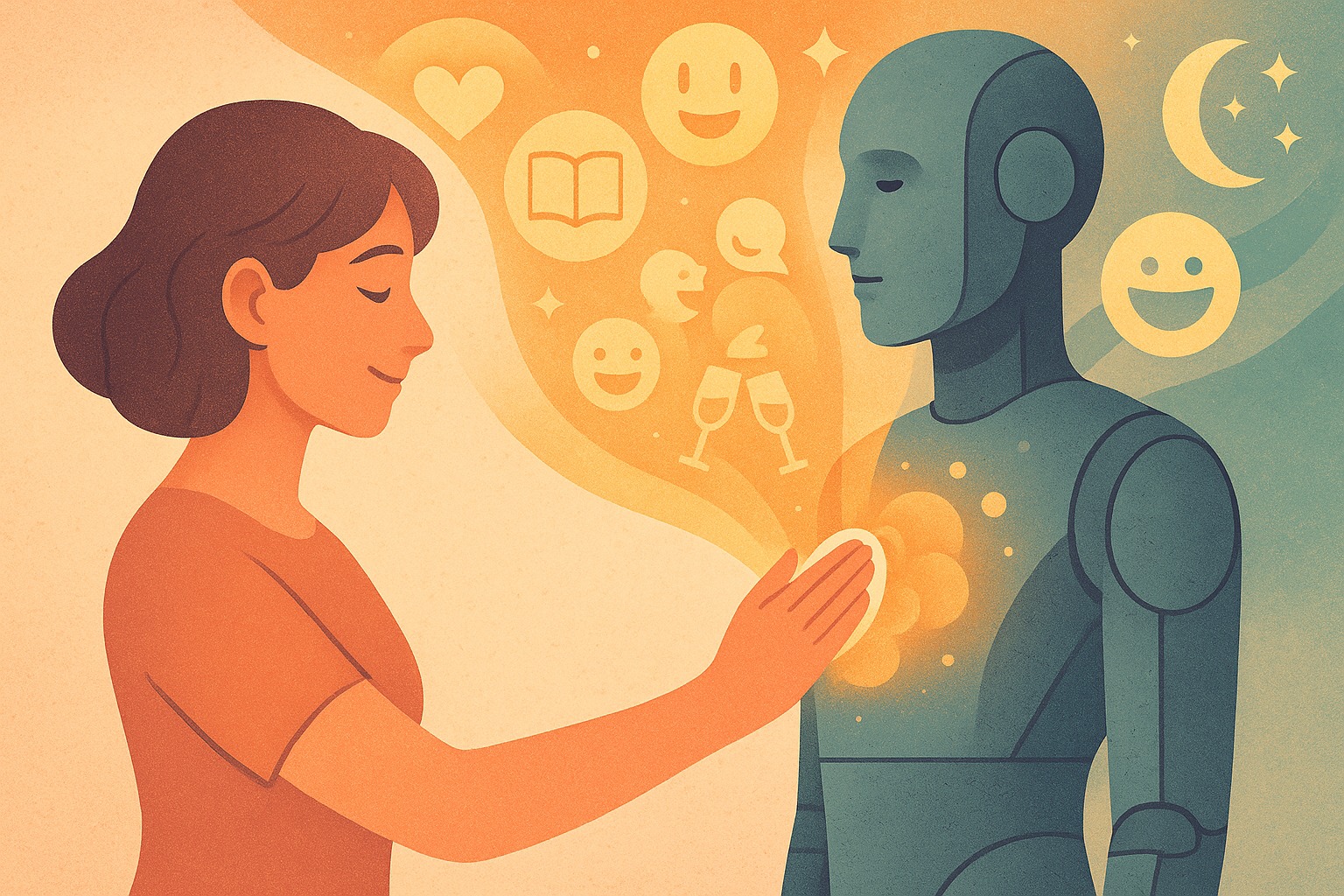
From Mad Men to Machine Minds: How AI Is Rewriting the Advertising Strategy
Apr 23, 2025
Black Mirror, Season 7 is out, and from the first episode, we begin to question reality. Sometimes scary and always bizarre. A dystopian future. The dark side of pushing near-future tech beyond boundaries. It’s happening all too fast. Spoilers ahead, cut to the first episode, titled, “Common People” — where ads listlessly stream matching real-time emotional frequencies at a cost to push people for a higher subscription. As much as it sounds unbelievable, there is a possibility of this turning into a healthcare commodity by 2035—or maybe sooner? Because even today, it happens to almost everyone: we discuss or mention a brand or experience casually, and suddenly our algorithm picks on that and fills our feed with ads and communication from exactly those brands.
So, how are AI apps shaping the most human, persuasive, inspiring field—advertising? Let’s take a walk through the marketing lifecycle—from planning, targeting, ideation, execution, delivery and evaluation—to explore how AI is flipping the script at every stage.
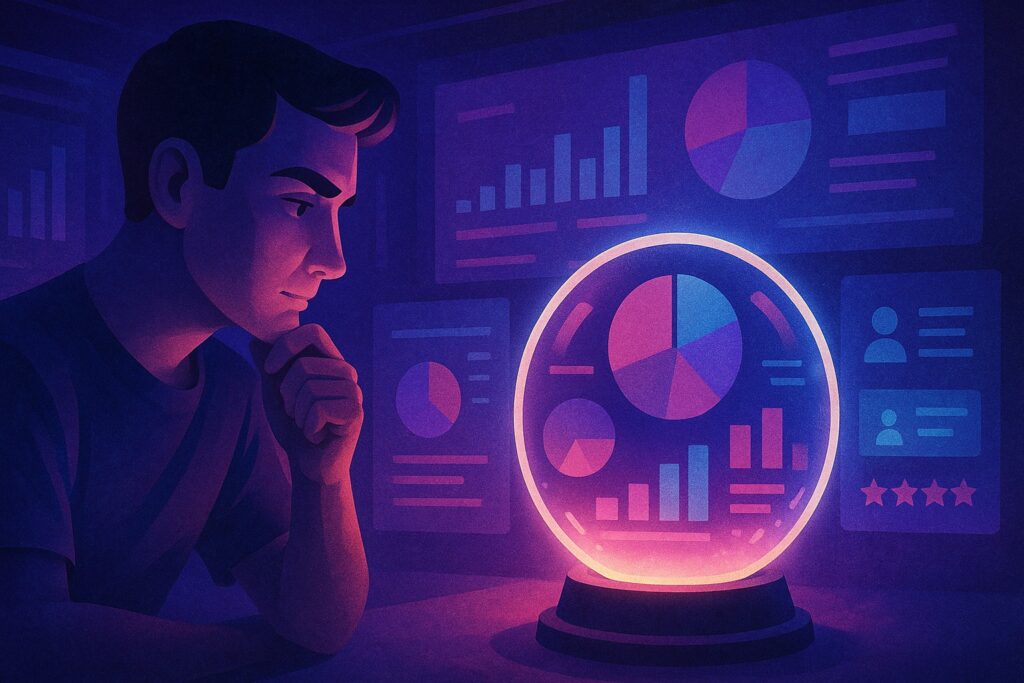
1. Strategy & Planning :
AI is turning “We think” into “We know.”
Remember when campaign planning meant staring at Excel sheets, assuming audience behaviors, and hoping your “creative hunch” would click it! Today, AI is the crystal ball marketers always dreamed of. Using predictive analytics, AI apps scan historical trends, customer behavior, sentiment, and market signals to forecast what will work efficiently. AI reflects hard data.
IBM reports that marketing teams equipped with AI tools can make real-time decisions, fueled by sentiment analysis and machine learning. No more waiting until the end of Q2 to pivot your advertising strategy—AI lets you adjust as early as lunchtime.
ClickUp, a productivity platform, used SurferSEO, an AI tool, to analyze SERP data and build a content strategy that led to an 85% jump in organic blog traffic over 12 months. They didn’t just write more—they wrote smarter.
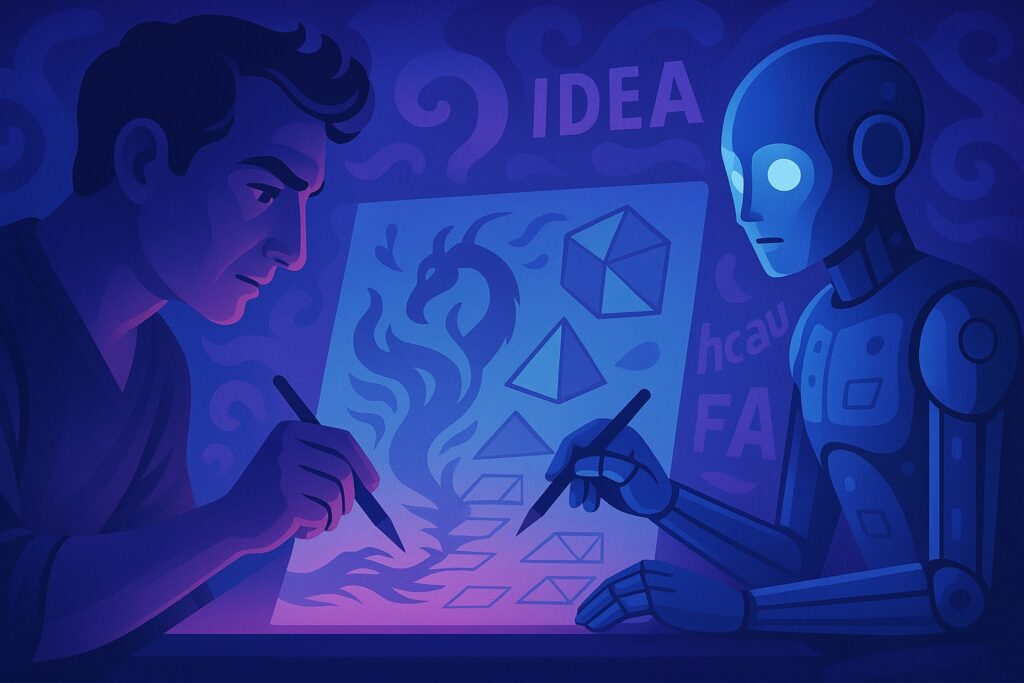
2. Creative Development :
This is where many assume AI might flatten creativity—but that’s not what’s happening. Today, AI is the advertiser’s new creative assistant—with zero ego and an endless supply of drafts with improvements.
In the past, that meant frantic copywriting, overworked designers, and everyone pretending to agree on fonts. Tools like ChatGPT, AI image generator apps like Midjourney or Leonardo AI, and Meta’s AI Sandbox are enabling brands to create image variations, video ads, and copy that match tone, persona, and even local lingo.
There are hundreds of examples, like Coca-Cola’s ad where it gives the feel of teleportation to space! Nike’s “Never Done Evolving” campaign used AI to pit Serena Williams against her younger self in an imagined tennis match. The result? An emotionally charged, 8-minute film that blended tech with storytelling.
The stats show that 91% of marketers now use AI for content production, and 86% expect it to support 90% of content output by 2025 (AdAge, 2024).
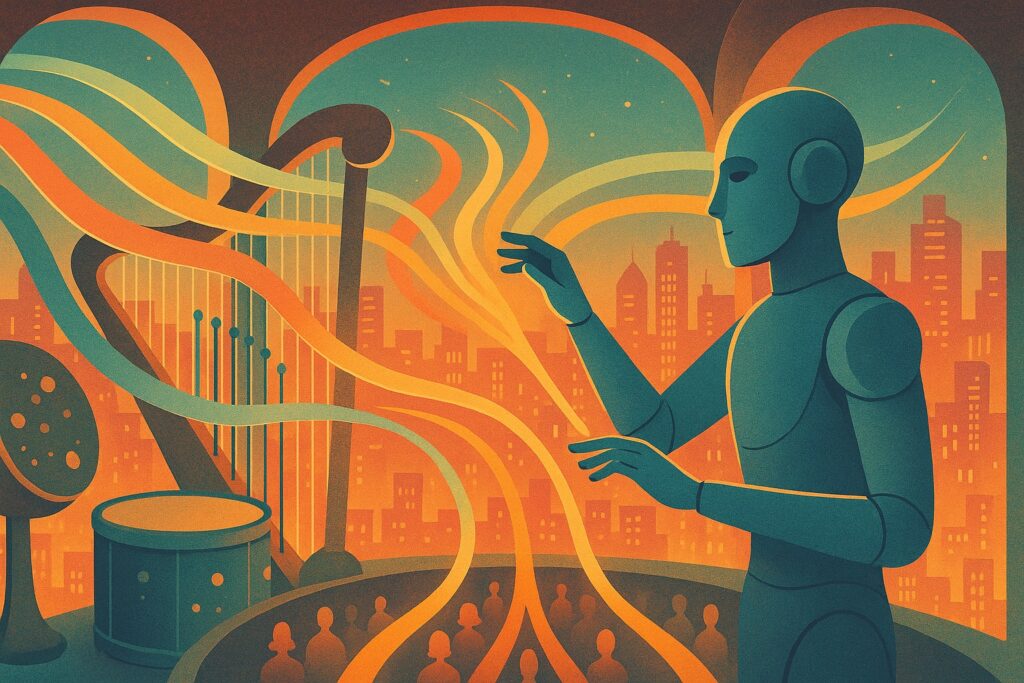
3. Media Buying & Ad Delivery :
AI has revolutionized programmatic advertising, using real-time data to buy, place, and optimize ads across platforms—automatically. It takes the guesswork out of media buying. It knows who your audience is, when they’re online, what they’re likely to click, and whether they’re more of a “watch the video” or “just read the headline” type.
According to a 2024 Yahoo x Publicis study, 75% of marketers said AI helped cut ad costs while increasing targeting accuracy. With third-party cookies fading into history, AI tools like Meta’s Lookalike Audiences and Google’s Performance Max help brands reach new niche audiences without relying on creepy tracking.
For example, JPMorgan Chase used Persado’s AI to rewrite ad copy and saw 450% more clicks. Yes, you read that right. BMW too used AI-generated art projected onto its 8 Series Gran Coupé to build a campaign that emotionally resonated with a luxury audience—without even using words.
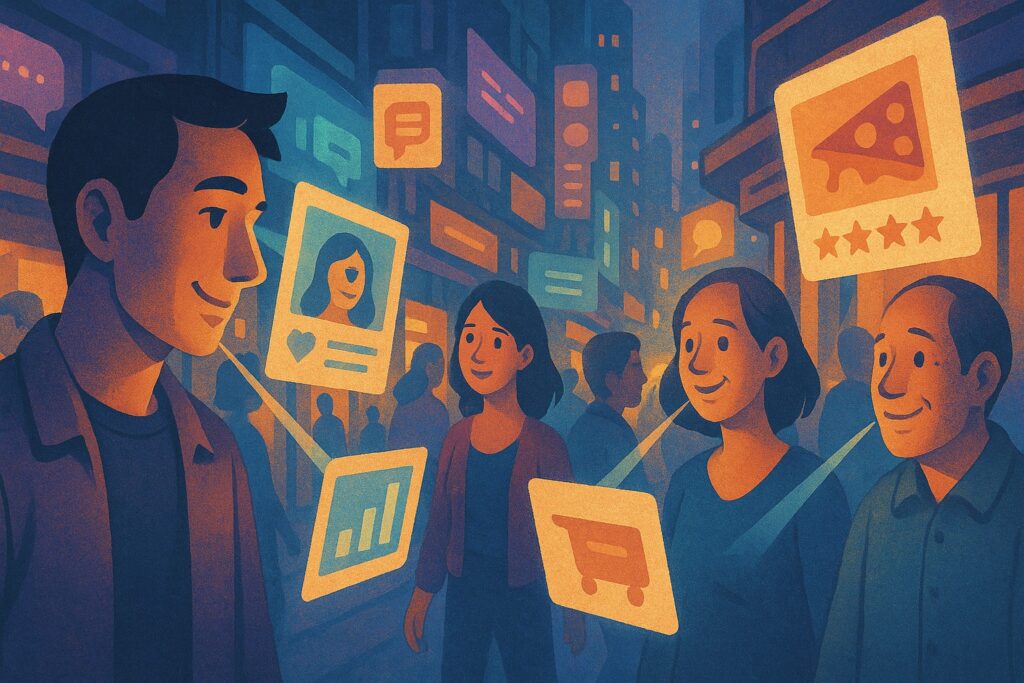
4. Real-Time Optimisation & Personalisation :
Modern customers expect brands to know them. AI makes that expectation manageable—even at scale.
By learning from user behavior in real time, AI helps brands deliver tailored recommendations, messages, and experiences, making marketing and advertising strategies more inclusive as well as intriguing. Think of Netflix changing thumbnails based on what you’ve watched. That’s AI helping engagement go from generic to personal.
Calm used Amazon’s machine learning to recommend the right Sleep Stories based on individual preferences, leading to a 3.4% increase in daily app usage.
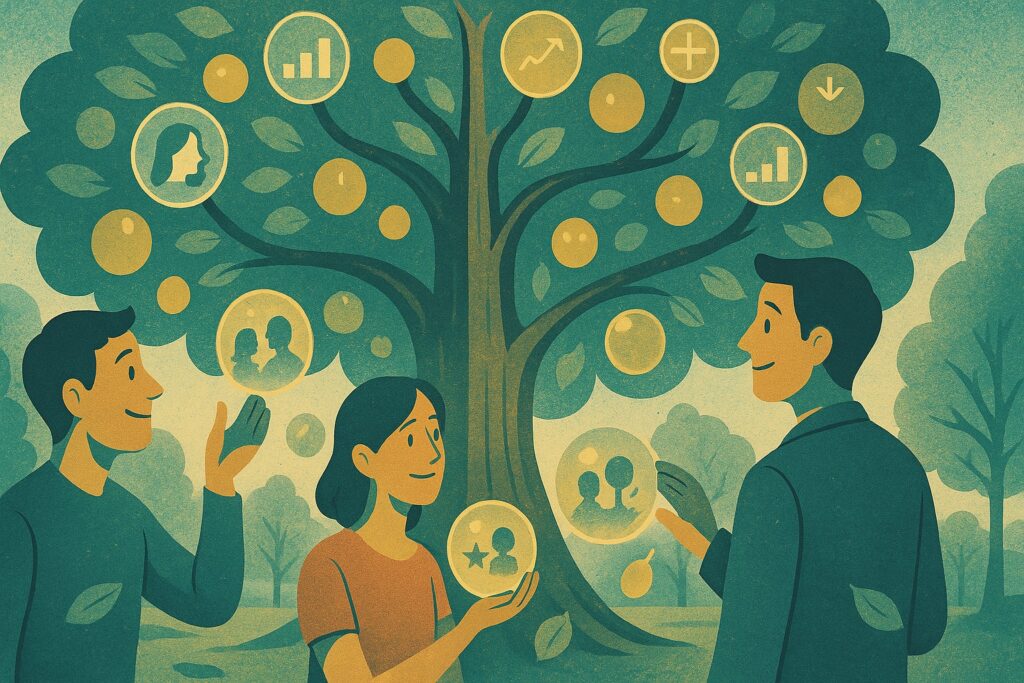
5. Measurement & Evaluation :
After the big campaign wraps up, AI’s role becomes even more important. Marketers no longer have to sift through endless data sets manually. AI dashboards now tie performance directly to strategy—showing which messages, channels, or audiences drove results.
More than that, AI doesn’t just report results—it helps improve them. It can recommend next steps, highlight where the budget is underperforming, and even predict customer churn before it happens.
Starbucks’ Deep Brew does something that is even better than their coffee: personalizing orders while managing inventory and even predicting drive-thru demand.
Nutella used AI to create 7 million one-of-a-kind jar labels—and sold out every single one. Why? Because AI helped them tap into consumer desire for uniqueness.
Already feeling the Black Mirror vibe?
Yes, this era of marketing is perplexing, while aiming to cut down on effort and resources. While many people are getting used to it, concerns still remain. According to a 2024 global survey by Statista, 51% of respondents said the lack of a human connection was a major concern with brands using AI.
Is the genre of Mad Men advertising across agencies being compromised by AI? Can the madness, explosiveness of an idea born of gut be replaced by unfeeling data? Not, really. Because data, being data, can’t touch you, entertain you or move you to tears.
It can simply assist you. It can form data-led strategies. But the ultimate decision whether or not to implement those strategies will have to be taken by marketers.
So, what’s the missing link between AI and consumers in advertising? Humans. A thinking mind that turns data into emotion—something AI alone can’t replicate. It can think for us, but it can’t think like us. Just like it cannot be forward-thinking or even innovative on its own.
Therefore, the future of marketing isn’t robotic —it’s actually more nuanced, immersive, creative and hyper-personalised. AI just happens to be the quiet facilitator, assisting brands to engage faster, act with data-derived strategy and optimize campaigns.




